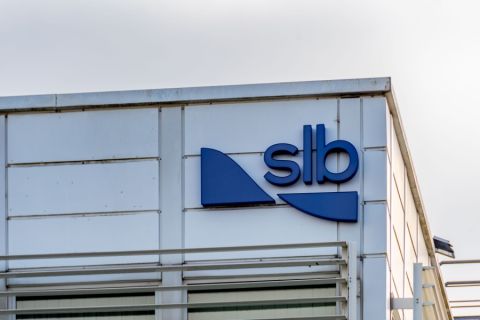
An aerial image from Google Earth shows Chevron Phillips Chemical Co.’s Cedar Bayou ethane cracker in Baytown, Texas. Source: Google Earth, Shutterstock
The recent startup of Chevron Phillips Chemical Co. LP’s facility in Baytown, Texas, is turning out to be what it was cracker-ed up to be.
Fresh demand sent ethane prices up 3.2% at the Mont Belvieu, Texas, hub last week to its highest point since the end of January, and 20.3% at Conway, Kan. The Mont Belvieu margin improved from 5.6 cents per gallon (gal) to almost 7 cents/gal.
At peak, the energy-efficient Cedar Bayou cracker will boast a capacity of 1.5 million metric tons of ethylene per year. The new cracker will feed its two sister polyethylene units in Old Ocean, Texas, which launched in September 2017. The new plants jump-start what Chevron Phillips calls its “new era of growth” for its petrochemical business on the Gulf Coast.
 “The U.S. Gulf Coast petrochemicals project is the most transformational project in the history of our company,” said Mark Lashier, president and CEO of Chevron Phillips Chemical, in a statement on March 12.
“The U.S. Gulf Coast petrochemicals project is the most transformational project in the history of our company,” said Mark Lashier, president and CEO of Chevron Phillips Chemical, in a statement on March 12.
En*Vantage Inc. expects rising ethane demand as other crackers pick up, among them:
- Singapore-based Indorama Corp.’s Lake Charles, La., ethane/propane cracker, with capacity of 370,000 tons per year was expected to start up soon; and
- DowDuPont’s light hydrocarbon 9 plant in Freeport, Texas, down for maintenance at the beginning of the month, is back online.
That means that ethane inventories should be trending downward as demand rises by 200,000 barrels per day between March and September, En*Vantage projects. The analysts forecast the price, which Hart Energy gauges at just under 25 cents/gal at Mont Belvieu this past week, to average around 30 cents/gal at mid-year and 35 cents/gal by the end of 2018.
 The price of propane was up 5.7% at Mont Belvieu to return to the 80 cents/gal range and rose for the first time in a month to about 66 cents/gal at Conway. Margins also widened by about 10% at Mont Belvieu and 12% at Conway.
The price of propane was up 5.7% at Mont Belvieu to return to the 80 cents/gal range and rose for the first time in a month to about 66 cents/gal at Conway. Margins also widened by about 10% at Mont Belvieu and 12% at Conway.
 In the week ended March 16, storage of natural gas in the Lower 48 experienced a decrease of 86 billion cubic feet (Bcf), the U.S. Energy Information Administration reported, close to the Bloomberg consensus of an 89 Bcf draw and more than the five-year average of 53 Bcf. The figure resulted in a total of 1.446 trillion cubic feet (Tcf). That is 31.6% below the 2.113 Tcf figure at the same time in 2017 and 18.5% below the five-year average of 1.775 Tcf.
In the week ended March 16, storage of natural gas in the Lower 48 experienced a decrease of 86 billion cubic feet (Bcf), the U.S. Energy Information Administration reported, close to the Bloomberg consensus of an 89 Bcf draw and more than the five-year average of 53 Bcf. The figure resulted in a total of 1.446 trillion cubic feet (Tcf). That is 31.6% below the 2.113 Tcf figure at the same time in 2017 and 18.5% below the five-year average of 1.775 Tcf.
Joseph Markman can be reached at jmarkman@hartenergy.com and @JHMarkman.
Recommended Reading
No Good Vibrations: Neo Oiltools’ Solution to Vibrational Drilling Problems
2024-09-10 - Vibrations cause plenty of costly issues when drilling downhole, but Neo Oiltool’s NeoTork combats these issues, enhancing efficiency and reducing costs.
Adionics Unveils Lithium Extraction Technology For Recycled Batteries
2024-09-09 - The Paris-based company said its liquid-liquid process achieved lithium recoveries of up to 98% across a range of brine concentrations.
SLB Launches New GenAI Platform Lumi
2024-09-17 - Lumi’s machine learning capabilities will be used to enhance SLB’s Delfi digital platform offering for better automation and operational efficiencies.
New Texas 30-MW Data Center Begins Construction
2024-11-11 - Dataprana’s 30-megawatt data center in La Marque, Texas will help satiate the growing demand for cloud services, Web3 applications and digital asset mining.
Range Confirms: Data Center Talk Underway for Marcellus Gas-fired Power
2024-10-24 - Deals will take a while, however, as these multi-gigawatt agreements are also multi-decade investments, said Range Resources CFO Mark Scucci.
Comments
Add new comment
This conversation is moderated according to Hart Energy community rules. Please read the rules before joining the discussion. If you’re experiencing any technical problems, please contact our customer care team.






